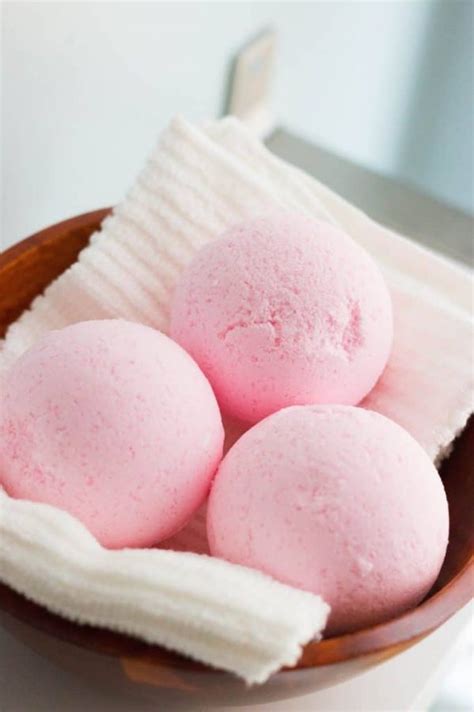How To Make A Bath Bomb Without Citric Acid
Ronan Farrow
Apr 01, 2025 · 4 min read

Table of Contents
How to Make a Bath Bomb Without Citric Acid
Are you ready to dive into the fizzy, fun world of bath bomb making? But what if you don't have citric acid? Don't worry! You can still create amazing, bubbly bath bombs without it. This guide will walk you through the process, exploring alternative ingredients and offering tips for success.
Understanding the Role of Citric Acid
Before we dive into alternatives, let's understand why citric acid is typically used. It's the key ingredient that reacts with baking soda to create the fizzing action. It provides the acid component in the classic acid-base reaction.
Citric Acid Alternatives for Bath Bombs
Several ingredients can mimic citric acid's function, offering a similar fizzy experience. Here are some popular options:
1. Cream of Tartar
Cream of tartar (potassium bitartrate) is a readily available kitchen staple, often used in baking. It's a mild acid and works well as a substitute for citric acid in bath bombs. It may not produce quite as vigorous a fizz, but it'll still deliver a satisfying bath bomb experience.
2. White Vinegar
White vinegar, a household cleaning staple, is a stronger acid than cream of tartar. Use it sparingly to avoid an overly potent fizz. A little goes a long way. Be mindful of the scent; vinegar's aroma can be strong. You may need to add more essential oils to mask it.
3. Fruit Juices
Certain fruit juices, like lemon juice or grapefruit juice, contain natural acids that can provide a gentle fizz. However, these are less potent than citric acid or cream of tartar, so you'll need to adjust the recipe accordingly, potentially using more juice. Note the scent these will add.
Making a Bath Bomb Without Citric Acid: A Step-by-Step Guide (Using Cream of Tartar)
This recipe uses cream of tartar as a replacement for citric acid. Remember to adjust the quantities depending on your chosen alternative.
Ingredients:
- 1 cup baking soda
- ½ cup cream of tartar
- ½ cup Epsom salt (for softer skin)
- ½ cup corn starch (or arrowroot powder) for added texture and to help absorb moisture
- 2 tablespoons of your favorite oil (coconut, olive, almond, etc.)
- Water (as needed, start with 1-2 tbsp)
- Essential oils (lavender, chamomile, tea tree, etc. — around 20-30 drops total)
- Optional: Dried flowers, herbs, or colorants (mica powders, etc)
Instructions:
-
Dry Ingredients: In a large bowl, thoroughly combine the baking soda, cream of tartar, Epsom salt, and cornstarch. Make sure there are no lumps. Sifting is recommended for a smoother texture.
-
Wet Ingredients: In a separate bowl, combine the oil and essential oils. This helps to evenly distribute fragrance and oils within your bath bomb.
-
Combining: Slowly add the wet ingredients to the dry ingredients, mixing gently with a fork or your hands. Add the water a teaspoon at a time, mixing continuously. The mixture should hold together when squeezed gently but not be overly wet. Avoid over-mixing to prevent premature fizz.
-
Molding: Pack the mixture firmly into your chosen bath bomb molds. If making spherical bath bombs, make sure both halves are compressed firmly before removing from the molds.
-
Drying: Allow the bath bombs to dry completely, preferably for several hours or even overnight, in a well-ventilated area. This step allows for the reaction between the baking soda and cream of tartar to fully settle.
-
Enjoy! Once dry, your bath bombs are ready to use.
Important Note: Using different acid alternatives may alter the consistency and fizz of your bath bomb. Experiment and find what works best for you! Always exercise caution when working with essential oils, ensuring they are appropriately diluted. Always conduct a patch test before using any new ingredients.
Troubleshooting your Bath Bomb Creation
If your bath bombs are too dry and crumble, you might need to add a little more water (a teaspoon at a time). If they're too wet and sticky, add a little more dry ingredients. This requires a bit of trial and error. Experimenting with the ratios to find what works well for your chosen recipe is key.
By following this guide, you can create amazing bath bombs even without citric acid. Happy crafting!
Featured Posts
Also read the following articles
| Article Title | Date |
|---|---|
| How To Hit A Pen Cart | Apr 01, 2025 |
| How To Join Enshrouded Server By Ip | Apr 01, 2025 |
| How To Hang A Bat House On A Tree | Apr 01, 2025 |
| How To Know When A Bowl Is Done | Apr 01, 2025 |
| How To Pay For Ketamine Infusions | Apr 01, 2025 |
Latest Posts
-
How To Store Puzzles When Done
Apr 02, 2025
-
How To Store Pool For Winter
Apr 02, 2025
-
How To Store Outdoor Toys
Apr 02, 2025
-
How To Store Nimh Batteries
Apr 02, 2025
-
How To Store Kayak In Apartment
Apr 02, 2025
Thank you for visiting our website which covers about How To Make A Bath Bomb Without Citric Acid . We hope the information provided has been useful to you. Feel free to contact us if you have any questions or need further assistance. See you next time and don't miss to bookmark.
